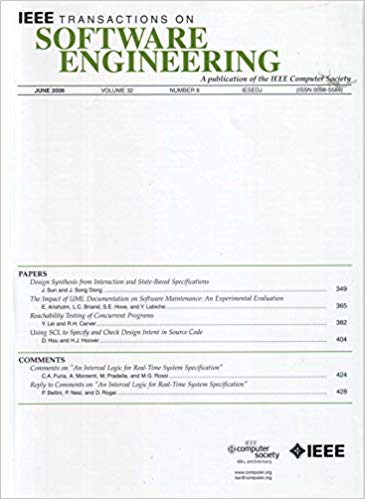T4PC: Training Deep Neural Networks for Property Conformance
IF 5.6
1区 计算机科学
Q1 COMPUTER SCIENCE, SOFTWARE ENGINEERING
引用次数: 0
Abstract
The increasing integration of Deep Neural Networks (DNNs) into safety critical systems, such as Autonomous Vehicles (AVs), where failures can lead to significant consequences, has fostered the development of many Verification and Validation (V&V) techniques. However, these techniques are applied mainly after the DNN training process is complete. This delayed application of V&V techniques means that property violations found require restarting the expensive training process, and that V&V techniques struggle in pursuit of checking increasingly large and sophisticated DNNs. To address this issue, we propose T4PC, a framework to increase property conformanceT4PC:训练属性一致性的深度神经网络
深度神经网络(dnn)越来越多地集成到安全关键系统中,例如自动驾驶汽车(av),其中故障可能导致严重后果,这促进了许多验证和验证(V&V)技术的发展。然而,这些技术主要是在深度神经网络训练过程完成后应用。这种延迟的V&V技术的应用意味着,发现财产侵犯需要重新启动昂贵的训练过程,并且V&V技术很难检查越来越大和复杂的dnn。为了解决这个问题,我们提出了T4PC,这是一个在DNN训练期间提高属性一致性的框架。增加财产一致性是通过丰富:1)数据准备阶段,以说明财产的前置和后置条件满意度;2)训练阶段,通过纳入与主要损失相结合的新财产损失项来说明财产满意度。我们针对导航DNN的一系列控制实验表明,T4PC可以有效地训练它符合单一和多个属性,并且还可以微调现有导航DNN的一致性,最初训练的是准确性。我们在仿真案例研究中应用T4PC对两个在CARLA模拟器中运行的开源自动驾驶系统进行了微调,结果表明它可以在保留原始驾驶功能的同时减少有针对性的驾驶违规行为。
本文章由计算机程序翻译,如有差异,请以英文原文为准。
求助全文
约1分钟内获得全文
求助全文
来源期刊

IEEE Transactions on Software Engineering
工程技术-工程:电子与电气
CiteScore
9.70
自引率
10.80%
发文量
724
审稿时长
6 months
期刊介绍:
IEEE Transactions on Software Engineering seeks contributions comprising well-defined theoretical results and empirical studies with potential impacts on software construction, analysis, or management. The scope of this Transactions extends from fundamental mechanisms to the development of principles and their application in specific environments. Specific topic areas include:
a) Development and maintenance methods and models: Techniques and principles for specifying, designing, and implementing software systems, encompassing notations and process models.
b) Assessment methods: Software tests, validation, reliability models, test and diagnosis procedures, software redundancy, design for error control, and measurements and evaluation of process and product aspects.
c) Software project management: Productivity factors, cost models, schedule and organizational issues, and standards.
d) Tools and environments: Specific tools, integrated tool environments, associated architectures, databases, and parallel and distributed processing issues.
e) System issues: Hardware-software trade-offs.
f) State-of-the-art surveys: Syntheses and comprehensive reviews of the historical development within specific areas of interest.
 求助内容:
求助内容: 应助结果提醒方式:
应助结果提醒方式:


